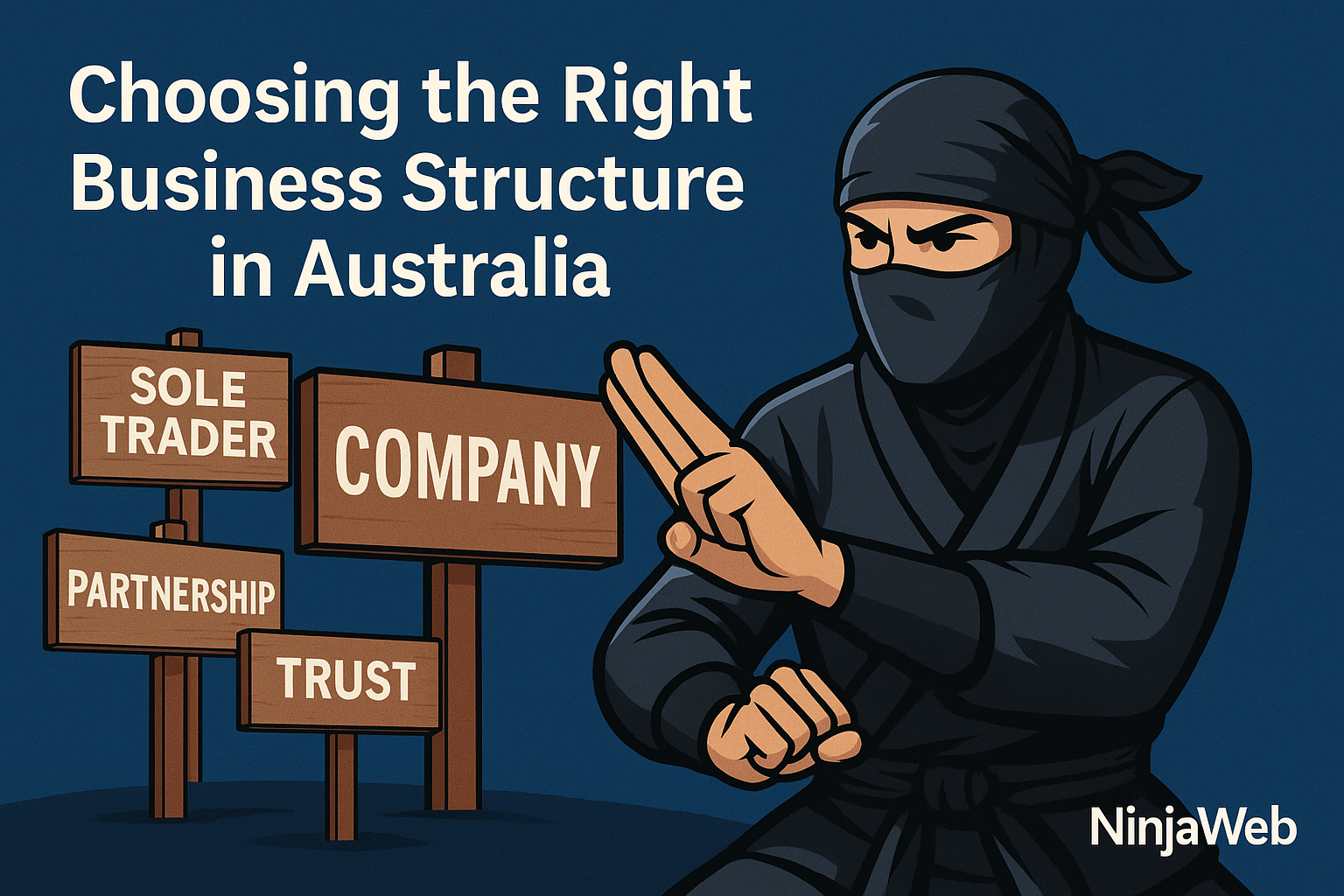
Your business structure shapes tax, liability and growth. This guide explains the pros and cons of sole trader, partnership, company and trust so you can choose the right business structure in Australia.
Why Business Structure Matters
Your business structure is the framework that holds operations together. It affects tax obligations, personal liability, control and management, setup and compliance costs, and how easily you can raise capital.
Sole Trader: The Simple Start
A sole trader is the most straightforward option with minimal setup. You control every decision and report income in your personal tax return.
- Pros: low cost to start, full control, simple reporting.
- Cons: personal liability for debts, limited growth, blurred personal and business finances.
Best for: freelancers, side hustles and micro businesses.
Partnership: Sharing the Load
A partnership allows two or more people to operate together, combining skills and resources.
- Pros: shared workload, easy setup, pooled capital.
- Cons: partners are personally liable, disputes risk stability, profits are shared.
Best for: small teams with complementary strengths.
Company: A Stronger Shield
A company is a separate legal entity, which provides limited liability and professional credibility.
- Pros: limited liability, easier capital raising, continuity beyond founders.
- Cons: higher setup and ongoing compliance costs, directors’ duties, more complex tax.
Best for: growth focused businesses seeking investment or national expansion.
Trust: Control With Protection
Trusts use a trustee to manage assets for beneficiaries. They are commonly used for asset protection and flexible income distribution.
- Pros: asset protection benefits, flexible distributions, potential tax advantages.
- Cons: costly and complex to set up, requires a trust deed, higher compliance.
Best for: family businesses or investment structures where asset protection is a priority.
Key Factors Before You Decide
- Liability: how much personal risk are you willing to accept?
- Taxes: which option is efficient for expected income?
- Growth: do you plan to scale quickly or seek investors?
- Compliance: can you manage reporting requirements?
- Exit strategy: what happens if you sell or step back?
Your choice can change as you grow. Many start as sole traders and later transition to a company when the time is right.
Supporting Pillars For Your Structure
Once you lock in a business structure in Australia, strengthen your foundations with the right digital stack:
- Business Solutions for planning and governance.
- Identity & Branding to build trust and authority.
- Advanced IT Support to secure systems and data.
Choose With Confidence
There is no single right answer for every business. The right business structure in Australia balances risk, control and growth. If you want a second set of eyes on your plan, speak with your accountant and tap our strategy team.



